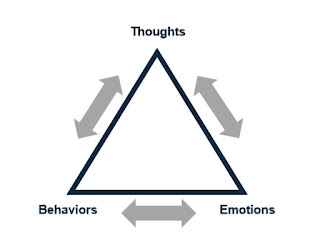Have you ever been in a conversation where no words were spoken, but you felt every word?
You could sense the tension, the excitement, or even the anger, without anyone uttering a single sentence. It’s not magic—it's the power of nonverbal communication. While we often focus on the words, the way we speak them—our body language, tone of voice, and facial expressions—can communicate far more than words alone. Imagine this: in a moment of high emotion, it's not just what is said, but how it’s said, that really speaks to us. Curious? Let’s dive into how these silent signals shape our interactions in ways words sometimes can’t.
The 93% Rule.....
In 1971, a study by Albert Mehrabian found that 93% of communication is nonverbal.
Here's how it breaks down:
💧 55% comes from body language,
👅 38% from tone of voice, and
👄 only 7% from words!
This means your body and voice say more than what you say out loud.
Example :
Imagine your sister says, “I’m fine,” but her voice sounds sarcastic.
What do you believe? We trust the tone more than the words. This shows how much nonverbal cues shape what we understand about each other.
Mastering the Art of Reading Cues
Imagine this:
A father waits anxiously for his teenage son to come home late one night. When the boy finally walks through the door, his father asks,
"Where have you been?"
The son responds nonchalantly, "I was at Rahul's house."
Yet, as he speaks, his eyes dart to the ground, and his hands tremble as he fidgets with his phone. His voice seems calm, but he avoids eye contact and shifts nervously from foot to foot.
In that moment, while the words suggest everything is fine, the father's instinct tells him otherwise. His son’s body language is broadcasting a different message—one filled with anxiety. This is a powerful reminder of how nonverbal cues can reveal what words conceal.
By honing your ability to observe these subtle signs, you can gain a deeper understanding of those around you, seeing beneath the surface of their words. Next time you find yourself in a conversation, remember this story.
Watch closely—you might uncover truths that will surprise you!
Going for an Interview?? .........
Focus on Your Body Language:
- Standing up straight,
- holding steady eye contact, and
- using calm gestures
Clothing Speaks Too ...
-
Dress to Impress:
-
First Impressions Matter:
Unmasking True Feelings...
-
The Real You: You can say one thing, but your body might tell a different story. Even if you say you're fine, a raised eyebrow or a stiff smile might show you're not.
-
Microexpressions Matter: Paul Ekman’s research on tiny facial expressions—called microexpressions—shows how these small changes can reveal hidden emotions, like anger or happiness.
-
Enhancing Empathy: Paying attention to these subtle signs can help you understand others better. By noticing how someone’s feeling beyond their words, you can build deeper, more meaningful connections.
The Primal Response of Body Language
-
Automatic Reactions: Our body language is built into us, part of our biology. It's controlled by the brain’s limbic system, which reacts before we even realize it—especially when we're stressed or feel threatened.
-
Your Body Doesn’t Lie: These automatic reactions can show feelings that words can't. By paying attention to your own body language, you can get a better sense of your emotions—and others' too.
Nonverbal communication is a powerful tool. By paying attention to the silent signals you send and receive, you can improve your connections with others and communicate more clearly.
So What message is your body sending today?




No comments:
Post a Comment